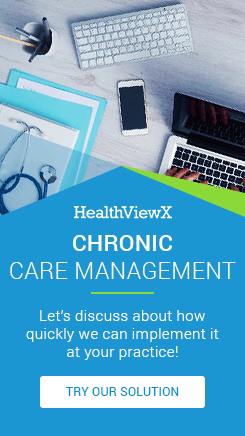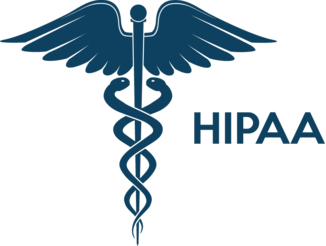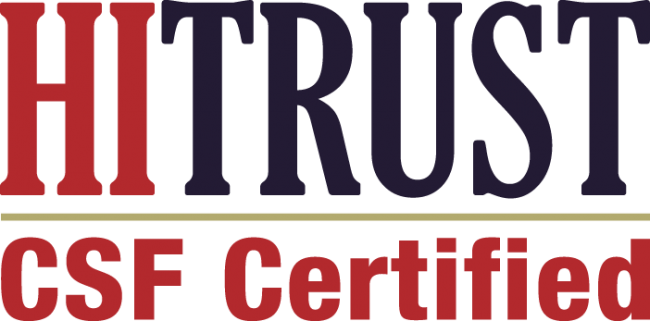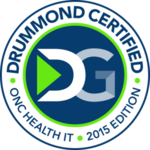The American healthcare landscape is undergoing a profound transformation. With healthcare profit pools projected to grow from $583 billion in 2022 to $819 billion by 2027—a robust 7% compound annual growth rate—the industry is experiencing unprecedented expansion while simultaneously grappling with mounting pressures for efficiency, quality, and cost containment. In this complex environment, healthcare providers are increasingly turning to innovative care management solutions that can scale with their operations while seamlessly integrating with existing systems.
HealthViewX emerges as a pivotal platform in this evolution, offering comprehensive care management capabilities that address the dual imperatives of scalability and interoperability. As healthcare organizations navigate the challenges of 2025 and beyond, understanding how technology solutions like HealthViewX can transform care delivery becomes essential for sustainable success.
The Current State of US Healthcare: Challenges and Opportunities
Market Dynamics and Growth Projections
The US healthcare industry is experiencing remarkable growth across multiple sectors. The home healthcare market alone reached $194.24 billion in 2024 and is projected to surge to $644.37 billion by 2034, representing a striking 12.74% compound annual growth rate. This explosive growth reflects the industry’s shift toward patient-centered, value-based care models that prioritize convenience, accessibility, and outcomes.
Healthcare IT represents one of the fastest-growing segments within the broader healthcare ecosystem. Industry profits in healthcare IT are expected to double from $14 billion in 2019 to $28 billion by 2024, underscoring the critical role that technology plays in modern healthcare delivery. This growth trajectory reflects providers’ recognition that robust technological infrastructure is no longer optional—it’s essential for competitive advantage and operational excellence.
The Digital Transformation Imperative
Digital adoption in healthcare has accelerated dramatically. A growing percentage of consumers are embracing connected monitoring devices and digital health tools, with usage jumping from 34% in 2022 to 43% in 2024. This trend indicates that patients expect the same level of digital sophistication from their healthcare providers that they experience in other industries.
Healthcare organizations are responding by investing heavily in digital infrastructure. As of 2016, 96% of hospitals and 78% of physicians’ offices were using certified technology for health records, representing a massive shift from paper-based systems to digital platforms. However, having digital systems is only the first step—the real value lies in making these systems work together seamlessly.
The Interoperability Challenge
Despite widespread adoption of electronic health records (EHRs), healthcare organizations continue to struggle with interoperability. As of 2021, only 62% of hospitals in the United States were functioning effectively across all four domains of interoperability. This gap represents a significant opportunity for improvement and highlights the critical need for solutions that can bridge disparate systems.
The challenges are substantial. About 50% of US hospitals identify data management as the biggest obstacle to enhancing healthcare interoperability. Perhaps most telling, in 2021, the most widely used methods for exchanging care records were still mail or fax, hardly the seamless digital integration that modern healthcare demands. On average, US hospitals employ three to four different electronic methods for sharing patient information, creating complexity and inefficiency in care coordination.
Understanding Modern Care Management Requirements
Scalability in Healthcare Operations
Scalability in healthcare extends far beyond simply handling more patients. It encompasses the ability to expand services, integrate new care modalities, adapt to regulatory changes, and maintain quality standards as organizations grow. Modern providers need systems that can accommodate everything from routine primary care to complex chronic disease management, all while maintaining consistent performance and user experience.
The scalability challenge is particularly acute given the industry’s profit pressures. While healthcare profit pools are growing, individual organizations face margin compression due to inflation, labor shortages, and increased regulatory requirements. This environment demands solutions that can drive efficiency gains while supporting expanded service offerings.
The Interoperability Imperative
Interoperability in healthcare involves multiple layers of complexity. Technical interoperability ensures that different systems can communicate and exchange data. Semantic interoperability establishes common vocabularies and coding standards, such as ICD-10 codes for mortality statistics. Organizational interoperability requires alignment of policies, procedures, and workflows across different entities.
The lack of true interoperability has real consequences for patient care and organizational efficiency. When systems cannot communicate effectively, providers face challenges in identifying care gaps, coordinating treatment plans, and accessing comprehensive patient histories. This fragmentation can lead to duplicated tests, delayed diagnoses, and suboptimal patient outcomes.
HealthViewX: A Comprehensive Care Management Solution
Platform Overview and Architecture
HealthViewX addresses these challenges through a comprehensive care management platform designed from the ground up for scalability and interoperability. The platform’s architecture supports everything from small practices to large health systems, providing the flexibility to adapt to varying organizational needs and growth trajectories.
The platform’s design philosophy centers on modularity and integration. Rather than forcing organizations to replace existing systems, HealthViewX works alongside current infrastructure, creating connections and workflows that enhance rather than disrupt established operations. This approach recognizes the reality that healthcare organizations have significant investments in existing technology and cannot afford wholesale system replacements.
Scalable Care Management Capabilities
HealthViewX’s scalability manifests in several key areas. The platform supports automated care plan creation and management, allowing organizations to standardize care protocols while maintaining the flexibility to customize approaches for individual patients. This automation becomes increasingly valuable as patient volumes grow, ensuring that quality standards remain consistent regardless of scale.
Population health management capabilities enable providers to monitor and manage large patient cohorts effectively. The platform can track outcomes across thousands of patients, identify trends and patterns, and flag individuals who may require intervention. This population-level view is essential for value-based care contracts and quality reporting requirements.
Care coordination features streamline communication between providers, specialists, and support staff. Automated notifications, task assignments, and workflow management reduce administrative burden while ensuring that important care activities don’t fall through the cracks. As organizations grow and care teams become more complex, these coordination capabilities become increasingly critical.
Interoperability and Integration Features
HealthViewX’s HealthBridge interoperability capabilities address the technical, semantic, and organizational challenges that healthcare organizations face. The platform supports industry-standard APIs and data exchange protocols, enabling seamless integration with existing EHR systems, laboratory systems, imaging platforms, and other healthcare technologies.
FHIR (Fast Healthcare Interoperability Resources) compliance ensures that data can be exchanged in standardized formats that maintain meaning and context across different systems. This standardization is crucial for care coordination, particularly when patients receive care from multiple providers or health systems.
The platform also supports real-time data synchronization, ensuring that care teams have access to the most current patient information regardless of where that information originates. This capability is particularly valuable in emergencies or when patients transition between care settings.
Key Features Driving Provider Success
Care Plan Management and Automation
Modern care management requires the ability to create, implement, and monitor comprehensive care plans that address both acute and chronic conditions. HealthViewX provides sophisticated care plan management capabilities that support evidence-based protocols while allowing for individualized patient needs.
The platform’s automation features reduce the administrative burden associated with care plan management. Automated reminders ensure that patients receive appropriate follow-up care, while protocol-driven workflows guide care team members through complex treatment algorithms. This automation is particularly valuable for managing chronic conditions that require ongoing monitoring and intervention.
Care plan templates can be customized to reflect organizational preferences and clinical protocols while maintaining compliance with quality measures and regulatory requirements. As organizations grow and serve more diverse patient populations, these templates provide consistency and efficiency in care delivery.
Patient Engagement and Communication Tools
Patient engagement has become a critical component of successful care management, particularly as healthcare moves toward value-based payment models that reward outcomes rather than volume. HealthViewX provides comprehensive patient engagement tools that support communication, education, and self-management.
Multi-channel communication capabilities enable providers to reach patients through their preferred methods, whether that’s secure messaging, phone calls, text messages, or mobile app notifications. This flexibility is essential given the diverse communication preferences across different patient populations.
Educational resources and self-monitoring tools empower patients to take active roles in their care. The platform can deliver targeted educational content based on individual patient needs and conditions, while self-monitoring capabilities allow patients to track symptoms, medications, and vital signs between visits.
Analytics and Reporting Capabilities
Data analytics play a crucial role in modern care management, supporting everything from clinical decision-making to quality improvement initiatives. HealthViewX provides comprehensive analytics capabilities that transform raw data into actionable insights.
Real-time dashboards provide care teams with immediate visibility into patient status, care plan adherence, and outcome trends. These dashboards can be customized to reflect different roles and responsibilities, ensuring that each team member has access to relevant information without information overload.
Predictive analytics capabilities help identify patients at risk for adverse outcomes or hospital readmissions. By analyzing patterns in patient data, the platform can flag individuals who may benefit from additional interventions or closer monitoring. This predictive capability is particularly valuable for managing high-risk populations and reducing avoidable healthcare costs.
Reporting features support quality improvement initiatives, regulatory compliance, and value-based care contracts. The platform can generate reports that demonstrate compliance with quality measures, track progress toward organizational goals, and provide the documentation needed for various reporting requirements.
Industry Impact and Benefits
Improving Care Quality and Outcomes
The combination of scalable care management and seamless interoperability creates opportunities for significant improvements in care quality and patient outcomes. When care teams have access to comprehensive patient information and can coordinate effectively across different providers and settings, the result is more informed decision-making and better patient experiences.
Care coordination improvements are particularly impactful for patients with complex conditions who require care from multiple specialists. When providers can access complete patient histories, current treatment plans, and recent test results, they can make more informed decisions and avoid potentially harmful drug interactions or duplicate procedures.
Population health management capabilities enable providers to identify and address care gaps proactively. Rather than waiting for patients to present with problems, providers can use data analytics to identify individuals who may benefit from preventive interventions or who may be at risk for adverse outcomes.
Operational Efficiency and Cost Reduction
The operational benefits of comprehensive care management platforms extend throughout healthcare organizations. Automation reduces administrative burden, allowing clinical staff to focus on direct patient care rather than paperwork and coordination tasks. This efficiency is particularly valuable given ongoing healthcare workforce challenges and the need to maximize productivity.
Interoperability reduces the time and effort required to access patient information from different systems. Instead of logging into multiple platforms or requesting records from other providers, care team members can access comprehensive patient information through a single interface. This streamlined access improves efficiency and reduces the likelihood of important information being overlooked.
Care coordination improvements can reduce avoidable healthcare utilization, such as emergency department visits or hospital readmissions. When patients receive appropriate follow-up care and have access to their care teams, they’re less likely to require expensive emergency interventions.
Supporting Value-Based Care Models
The shift toward value-based care models creates new requirements for healthcare organizations. Success in these models depends on the ability to manage population health, coordinate care effectively, and demonstrate improved outcomes while controlling costs. HealthViewX’s capabilities align directly with these requirements.
Quality measure tracking and reporting features support participation in various value-based care programs. The platform can automatically track relevant quality metrics and generate reports that demonstrate compliance with program requirements. This automation reduces the administrative burden associated with quality reporting while ensuring accuracy and completeness.
Risk stratification capabilities help organizations identify high-risk patients who may benefit from intensive care management interventions. By focusing resources on patients most likely to benefit, organizations can improve outcomes while controlling costs.
Care gap identification and closure features help ensure that patients receive appropriate preventive care and chronic disease management. By proactively addressing care gaps, organizations can prevent adverse outcomes while improving quality scores.
Implementation Considerations and Best Practices
Strategic Planning and Organizational Readiness
Successful implementation of comprehensive care management platforms requires careful planning and organizational commitment. Healthcare organizations should begin by assessing their current capabilities, identifying gaps, and developing clear goals for care management improvement.
Stakeholder engagement is crucial throughout the implementation process. Care teams, administrative staff, and organizational leadership all play important roles in successful platform adoption. Regular communication about implementation progress, benefits, and challenges helps maintain momentum and address concerns proactively.
Change management strategies should address both technical and cultural aspects of platform adoption. While the technical aspects of system integration are important, the human elements of workflow changes and new care delivery models often present greater challenges.
Integration and Workflow Optimization
Effective platform implementation requires careful attention to integration with existing systems and workflows. Organizations should work closely with their technology partners to ensure that data flows seamlessly between systems and that workflows support rather than hinder care delivery.
Workflow optimization often requires iterative refinement as organizations gain experience with new capabilities. Initial workflows may need adjustment as care teams identify opportunities for improvement or encounter unexpected challenges. This iterative approach helps ensure that the platform truly enhances rather than complicates care delivery.
Training and support programs help ensure that care team members can effectively utilize platform capabilities. Comprehensive training should address not only technical aspects of system use but also the clinical workflows and care coordination processes that the platform supports.
Measuring Success and Continuous Improvement
Healthcare organizations should establish clear metrics for evaluating the success of their care management platform implementation. These metrics should align with organizational goals and may include clinical outcomes, operational efficiency measures, patient satisfaction scores, and financial performance indicators.
Regular monitoring and analysis of these metrics help identify opportunities for improvement and demonstrate the value of platform investments. Organizations should be prepared to make adjustments to workflows, training programs, or system configurations based on performance data and user feedback.
Continuous improvement processes ensure that organizations maximize the value of their platform investments over time. As healthcare delivery models evolve and new technologies become available, care management platforms should adapt to support changing needs and opportunities.
Conclusion: Transforming Healthcare Through Scalable, Interoperable Care Management
The American healthcare industry stands at a critical juncture. With profit pools growing to $819 billion by 2027 and digital adoption accelerating across all segments, the opportunities for improvement are substantial. However, realizing these opportunities requires healthcare organizations to address fundamental challenges related to scalability and interoperability.
HealthViewX represents the kind of comprehensive solution that modern healthcare providers need to succeed in this environment. By combining robust care management capabilities with seamless interoperability, the platform enables organizations to improve care quality, enhance operational efficiency, and succeed in value-based care models.
The statistics speak clearly about the direction of healthcare transformation. With 43% of consumers now using connected health devices and healthcare IT profits doubling to $28 billion, the digital transformation of healthcare is accelerating. Organizations that invest in scalable, interoperable care management solutions position themselves to thrive in this evolving landscape.
The challenges are real—50% of hospitals still struggle with data management for interoperability, and many organizations continue to rely on fax machines for care coordination. However, these challenges also represent opportunities for organizations that are willing to invest in comprehensive solutions.
As healthcare continues to evolve toward value-based models that reward outcomes rather than volume, the importance of effective care management will only increase. Organizations that can successfully coordinate care across multiple providers, engage patients in their own care, and demonstrate improved outcomes will be the ones that succeed in the healthcare industry of the future.
HealthViewX provides the foundation for this success, offering the scalability to grow with organizations and the interoperability to work seamlessly with existing systems. For healthcare providers looking to transform their care delivery capabilities, comprehensive care management platforms represent not just an opportunity for improvement—they represent an essential tool for future success.
The journey toward truly integrated, scalable care management is complex, requiring careful planning, stakeholder engagement, and continuous improvement. However, the potential benefits—improved patient outcomes, enhanced operational efficiency, and success in value-based care models—make this journey not just worthwhile but essential for healthcare organizations committed to delivering high-quality, patient-centered care in the 21st century.


